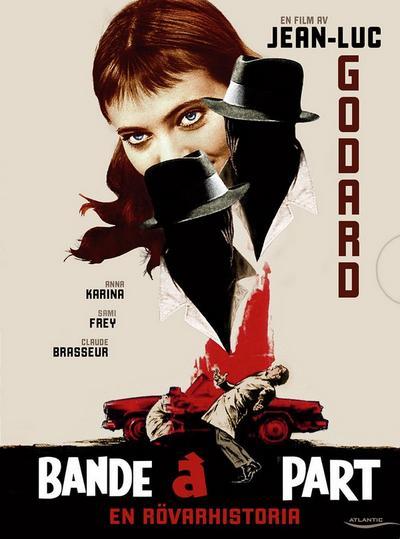Toshio Sugie – Janken musume AKA So Young, So Bright (1955)


Quote:
Western audiences associate Japanese popular cinema with monster movies and period dramas such as samurai films but, as with most national cinemas, comedies and musicals were industry mainstays. Very popular with domestic audiences, they were generally considered not to travel well. Janken Musume (Janken Girls, also known as So Young, So Bright) is a good 1950s example.
Japanese tradition is emphasized in the opening shots of Kyoto and orderly columns of uniformed schoolchildren. But not for long: we soon find a comic dozing teacher and two girls on the bus expressing their boredom with shrines and temples. Shortly after, Ruri (Misora Hibari) and Yumi (Chiemi Eri) fall into the river, spend the night with a french at Ruri’s mother and meet maiko (apprentice geisha) Pyua-chan (Yukimura Izumi). Tomboy Yumi reveals that she has never worn a kimono; Ruri and Pyua-chan sing and dance a traditional number, but Pyua-chan prefers jazz and mambo, which she, in traditional costume, and Yumi, in a dress, dance together. The film explores tensions between traditional and modern attitudes, and between Japanese and foreign cultures, as they manifest themselves in these three teenage girls, amid sleepovers and great romantic and family dramas: Ruri, raised by her single-parent geisha mother, needs to resolve the problems posed by her wealthy father and his wanting to adopt her; Yumi has a budding romance with the same boy who Pyua-chan hopes will save her from the geisha life.
At another level, the plot serves as a vehicle for three popular singers who were brought together for the film (and its sequels). Misora Hibari was Japan’s most popular 1950s singing star. In a key sequence, the girls decide to change their mood and go off to the ‘Girls’ Opera Grand Show’. Each girl in turn closes her eyes and imagines herself performing on stage: Pyua-chan sings and dances a cha-cha-cha in Japanese and English; Yumi performs the mambo ‘Happy, Happy Africa’; Ruri sings ‘La Vie en rose’. They come across as elegant, confident, international young women, ideal versions of themselves.
Most of the film’s numbers, traditional or modern, real or imagines, are performances; even when Pyua-chan sings ‘Smile’ (in Japanese), she has to tell herself to sing. Only in the closing roller-coaster sequence do the girls ‘break into sing’: each sings a solo (Pyua-chan sings ‘Mambo Jambo’, Yumi the cha-cha-cha ‘Blue Sky’ and Ruri the ‘Rendezvous Song’) before all three together sing the ‘Rock, Scissors, Paper’ song that opened the film. This celebration of triumph over their various dilemmas is given only a slightly unreal feel for the intercutting between very obvious rear projection for the song close-ups and location long shots of the roller coaster itself. Janken Musume was Toho’s biggest hit of the year and spawned sequels and imitations. Though it owed much of its success to its starring popular singers, the film no doubt played out the cultural dilemmas of its youthful audiences. Certainly, it is a fascinating document as well as a charming movie.
Some Japanese musicals were closer to the Hollywood model. Kimi mo shusse ga dekiru (You Too Can Succeed, 1964) builds on the popular ‘salarymen’ comedies: Toho sent its personnel to the US to familiarise themselves with Broadway, and the film is clearly influenced by both How to Succeed in Business Without Really Trying, then one of Broadway’s most successful shows, and the movie version of West Side Story. More recently, cult auteurs Miike Takashi and Suzuki Seijun gained notice for their musicals The Happiness of the Katakuris (2001) and Princess Raccoon (2005). Both are too eccentric to be considered mainstream, but Linda Linda Linda (directed by Yamashita Nobuhiro, 2005) is closer in spirit to Janken Musume.
-Jim Hillier (BFI Screen Guides: 100 Film Musicals)



So.Young.So.Bright.1955.DVDRip.x264-KG.mkv General Container: Matroska Runtime: 1 h 31 min Size: 1.56 GiB Video Codec: x264 Resolution: 692x460 ~> 692x519 Aspect ratio: 4:3 Frame rate: 23.976 fps Bit rate: 2 040 kb/s BPP: 0.267 Audio #1: 2.0ch AC-3 @ 384 kb/s
https://nitro.download/view/1E21CEBA287BF50/So.Young.So.Bright.1955.DVDRip.x264-KG.mkv
or
https://nitro.download/view/312C968FD9156F2/So.Young.So.Bright.1955.DVDRip.x264-KG.jp.idx
https://nitro.download/view/36D04FA7EB116AE/So.Young.So.Bright.1955.DVDRip.x264-KG.jp.sub
https://nitro.download/view/901D84B31AB3BC3/So.Young.So.Bright.1955.DVDRip.x264-KG_02.srt
Language(s):Japanese
Subtitles:Japanese vobsub,English





